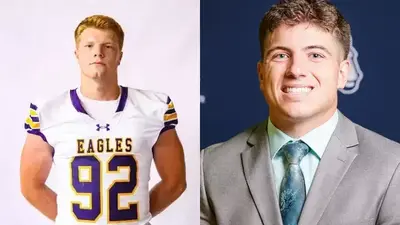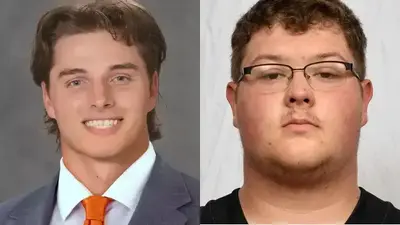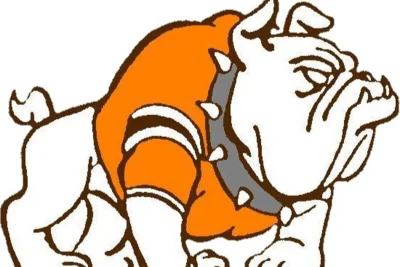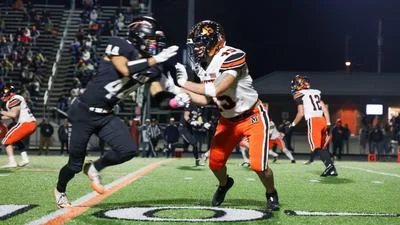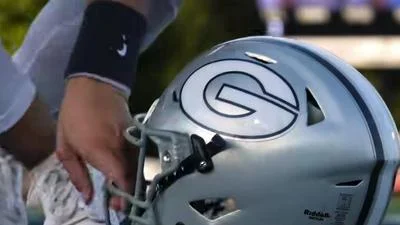Disc golf is a hybrid of throwing the Frisbee, target shots and golf. It is such a popular enthusiast recreation that Lobdell Reserve Disc Golf course in nearby Alexandria recently installed 19 new baskets to keep the course upscale, well-maintained and adherent to the disc-catching requirements of the Professional Disc Golf Association (PDGA).
The history of disc golf spans back nearly a century to Saskatchewan, Canada, with the use of tin lids and makeshift holes, and while the game has evolved over the years, it has become a growing recreation across the United States, including Mount Vernon, which has several courses. The activity has hit the "sweet spot" (Disc slang for the point of the basket where the disc has the highest likelihood of staying in the basket when hit) in popularity.
Discsportshistory.com says that the first recorded disc golf was in 1926, when Ronald Gibson and his friends from Bladworth Elementary School played a game in which they threw tin lids into circles that were drawn into the ground. It was dubbed “tin lid golf” and reportedly played regularly.
Fast forward to 1959, when George Sappenfield and Kevin Donnelly began spreading a form of the game, then-called Frisbee golf and now referred to as disc golf, to cities in California. In 1961, Donnelly was a recreation supervisor for Newport Beach, Ca., and he created a Frisbee golf tournament for children at playgrounds. This led to a citywide Frisbee golf tournament that was sponsored by Wham-O in 1965. The event had hula hoops for holes and had a set of rules, hole lengths, pars and prizes. Frisbee co-inventor Walter Frederick Morrison attended the tournament.
A report by Professional Disc Golf Association (PDGA) says that “Steady” Ed Headrick is the “father of disc golf.” He patented a number of inventions, with two pertaining to disc golf. One was the Frisbee in 1966, as an employee for Wham-O, and the other is the disc golf pole hole, which is what current holes are based on.
Sappenfield was a recreation counselor during summer break while attending Fresno State University. He was playing golf one day and had the idea that children in the playground could use Frisbees for a form of golf. He later found out Donnelly had been doing the same thing, and they formulated ideas together.
PDGA reports that Sappenfield graduated college in 1968 and became the Parks and Recreation supervisor for Thousand Oaks, Ca. He spoke with Wham-O about ideas for a tournament, and the company offered him a job as a promotions consultant. There he met Headrick and discussed holding an event at the Wham-O-sponsored-All Corners Frisbee Meet.
“Sappenfield went on to work full time for Wham-O until the company was sold in 1985,” the PDGA website says. “The combination of Donnelly’s – and especially Sappenfield's – early promotion of Frisbee golf was an important factor that led to the emergence of disc golf as an organized sport in 1974.”
In 1973, disc golf Hall of Famer Jim Palmeri and others from Rochester, N.Y., promoted two Disc Frisbee Championships in their city. He, his brother and a group of friends had been playing disc golf regularly since 1970, unaware of the sport's previous history. When they found out about the International Frisbee Association that Wham-O and Headrick had put together, they were amazed that the sport was being played by others around the country. This led them to creating the national tournament in 1974 called the American Flying Disc Open, with a 1974 Datsun B210 as a prize.
The PDGA says that the origins of disc golf history are questionable, with Palmeri saying that it is “impossible to answer.” He said there are historical accounts over the years of people playing with a flying disc, but sometimes it doesn’t appear that they relate to each other due to geography.
Headrick created the first official disc golf course at Oak Grove Park in Pasadena, Ca., in 1975. Seeing the growing popularity, Headrick resigned from his vice president position at Wham-O and started the Disc Golf Association in 1976. He then invented the basket for holes and founded the Professional Disc Golf Association, modeled after what the IFA created years before. Memberships were sold to players nationwide.
The game’s popularity continued into 1979, when Headrick held a $50,000 disc golf tournament that involved the world’s best players. It was won by Tom Kennedy.
In 1982, the PDGA was taken over by Ted Smethers. Headrick passed away in 2002 at the age of 78 and, according to discsportshistory.com, his ashes were put into discs in commemoration at his request. The Disc Golf Hall of Fame was created in 1993 by Lavonne Wolfe of Huntsville, Ala. The Disc Golf Center in Appling, Ga., now houses the Headrick Memorial Museum, which displays the history of the sport.
PDGA reported that in 2016 there were more than 31,000 members and the number was growing by the year.
Local organization
Locally, disc golf has grassroots action. The Columbus Flyers Disc Golf Club is a member-driven local nonprofit organization. Its mission is to promote the sport of disc golf throughout Central Ohio. It works with local parks and recreation departments to design, install and maintain courses in the area, as well as host events that promote competition and camaraderie while supporting the local community.
Local courses
In Mount Vernon, there are a number of ways to get out and toss the disc at a course. Mount Vernon Nazarene University announced on its website that the campus disc golf has expanded to 18 hours and is open, aside from holes six through eight being under construction. The course was designed by Beau Carlson and was created in 2010.
The university website said that the course is on 25 acres where Delano Run meets the Kokosing River at the south end of the campus. PDGA describes the course as being “fairly open with a stream in play on two holes,” which are eight and nine. One of the fairways also has a cornfield, and another fairway has woods involved. A course map is on the website.
The course is a par-62 at 6,376 feet. The longest hole on the front nine is a par-five at 593 feet, hole six. On the back nine, there is a 632-foot par four, hole 12. The course is open year-round.
There is also a nine-hole golf course in Mount Vernon called Thayer Ridge Park that is open all year, according to udisc.com. The course is a par 36 and totals 2,615 feet. The course has five par fours, two par threes and a pair of par fives. The longest hole is No. 2 at 396 feet.
Neo’s Matrix, also in Mount Vernon, is a nine-hole, par-31 wooded course that udisc.com describes as “very technical.” It covers 3,568 feet with the longest hole a par four at 555 feet, hole 14. There is also a par-5 hole at 561 feet, No. 13. There are six par threes and two par fours. Neo’s Matrix requires permission to play.
The Dam Disc Golf Course at Kokosing is just nine miles from Mount Vernon in Fredericktown. It is a nine-hole course that is a par-29 covering 2,365 feet. There are two par fours at holes seven and nine, and the rest are par threes.
Also, less than 25 miles away, is the Lobdell Reserve Disc Golf Course, 5474 Battee Road in Alexandria. Club members and volunteers installed 19 new Innova Discatcher baskets there to meet the modern-day disc-catching requirements of the Professional Disc Golf Association (PDGA) for different tiers of tournaments: C-tier, B-tier, A-tier and Elite series. The Columbus Flyers Disc Golf Club holds two large tournaments at the Lobdell course each year, bringing hundreds of participants and observers to the park.



